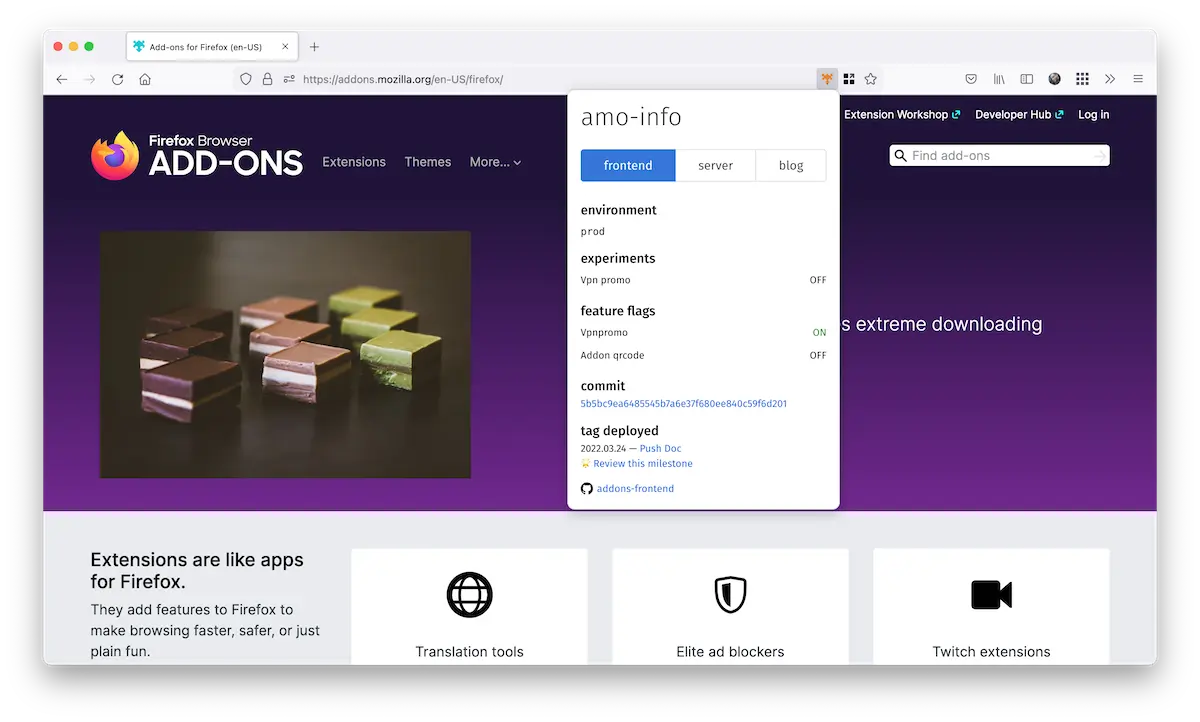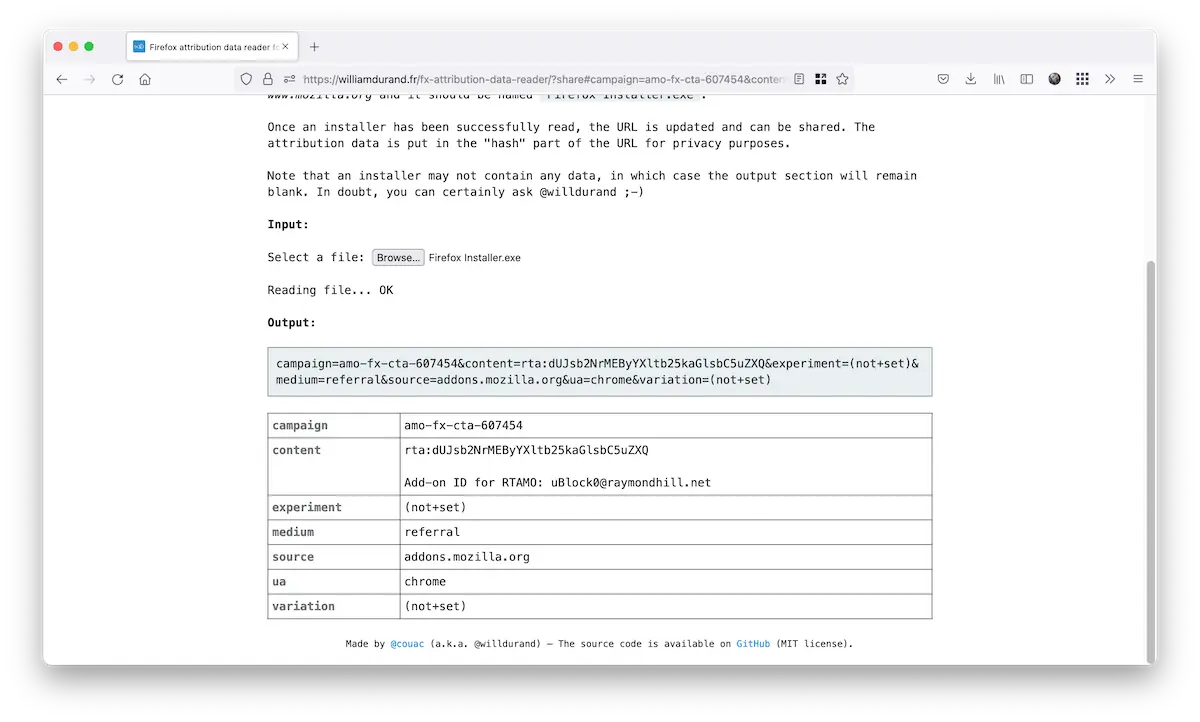Some non-production tools I wrote
Freiburg, GermanyThis is a short article about 3 different tools I authored for my needs at Mozilla.
I worked on AMO for almost 4 years and created various libraries like pino-mozlog, pino-devtools or an ESLint plugin to name a few. These libraries have been created either to improve our developer experience or to fulfill some production requirements.
This isn’t the kind of projects I want to focus on in the rest of this article, though. Indeed, I also wrote “non-production” tools, i.e. some side projects to improve my day-to-day work. These tools have been extremely useful to me and, possibly, other individuals as well. I use most of them on a weekly basis and I maintain them on my own.
amo-info
I wrote a browser extension named amo-info. This extension adds a page action button when we open the web applications maintained by the AMO/Add-ons team. Clicking on this button reveals a pop-up with relevant information like the environment, git tag, feature flags, etc.
 The amo-info extension displaying information about addons.mozilla.org.
The amo-info extension displaying information about addons.mozilla.org.
If this sounds familiar to you, it might be because I already mentioned this project in my article about feature flags. Anyway, knowing what is currently deployed in any environment at any given time is super valuable, and this extension makes it easy to find out!
I recently added support for Firefox for Android but it only works in Nightly.
git npm-release
A different tool I use every week is the git npm-release command, which automates my process to release new versions of our JavaScript packages.
$ git npm-release -h
usage: git npm-release [help|major|minor|patch]
git npm-release help
print this help message.
git npm-release major
create a major version.
git npm-release minor
create a minor version.
git npm-release patch
create a patch version.
For most of our JavaScript projects, we leverage a Continuous Integration (CI) platform (e.g., CircleCI) to automatically publish new versions on the npm registry when a git tag is pushed to a GitHub repository.
The git npm-release command is built on top of hub, npm
version and a homemade script to format release
notes. Running this command will (1) update the
package.json file with the right version, (2) make a git tag, (3) prepare the
release notes and open an editor, (4) push the commit/tag to GitHub, and (5)
create a GitHub release.
This process isn’t fully automated because (3) opens an editor with the pre-formatted release notes. I usually provide some more high level information in the notes, which is why this step requires manual intervention.
fx-attribution-data-reader
This is a tool I created not too long ago after telling a QA engineer that “he could simply open the binary in an hex editor” 😅 I can find my way in hex dumps because my hobbies are weird but I get that it isn’t everyone else’s cup of tea.
The fx-attribution-data-reader web application takes a Firefox for Windows binary and displays the attribution data that may be contained in it. Everything is performed locally (in the browser) but the results can also be shared (URLs are “shareable”).
 The fx-attribution-data-reader tool with a binary loaded and parsed.
The fx-attribution-data-reader tool with a binary loaded and parsed.
Currently, this is mainly useful to debug some add-ons related features and it is very niche. As such, this tool isn’t used very often but this is a good example of a very simple UI built to hide some (unnecessary) complexity.
Conclusion
I introduced three different tools that I am happy to use and maintain. Is it worth the time? I think so because it isn’t so much about the time shaved off in this case.
It is more about the simplicity and ease of use. Also, writing new tools is fun! I often use these ideas as excuses to learn more about new topics, be it programming languages, frameworks, libraries, or some internals.
ℹ️ Feel free to fork and edit this post if you find a typo, thank you so much! This post is licensed under the Creative Commons Attribution-ShareAlike 4.0 International (CC BY-SA 4.0) license.
Comments
You can get in touch with me on Mastodon or send me an email if you prefer.